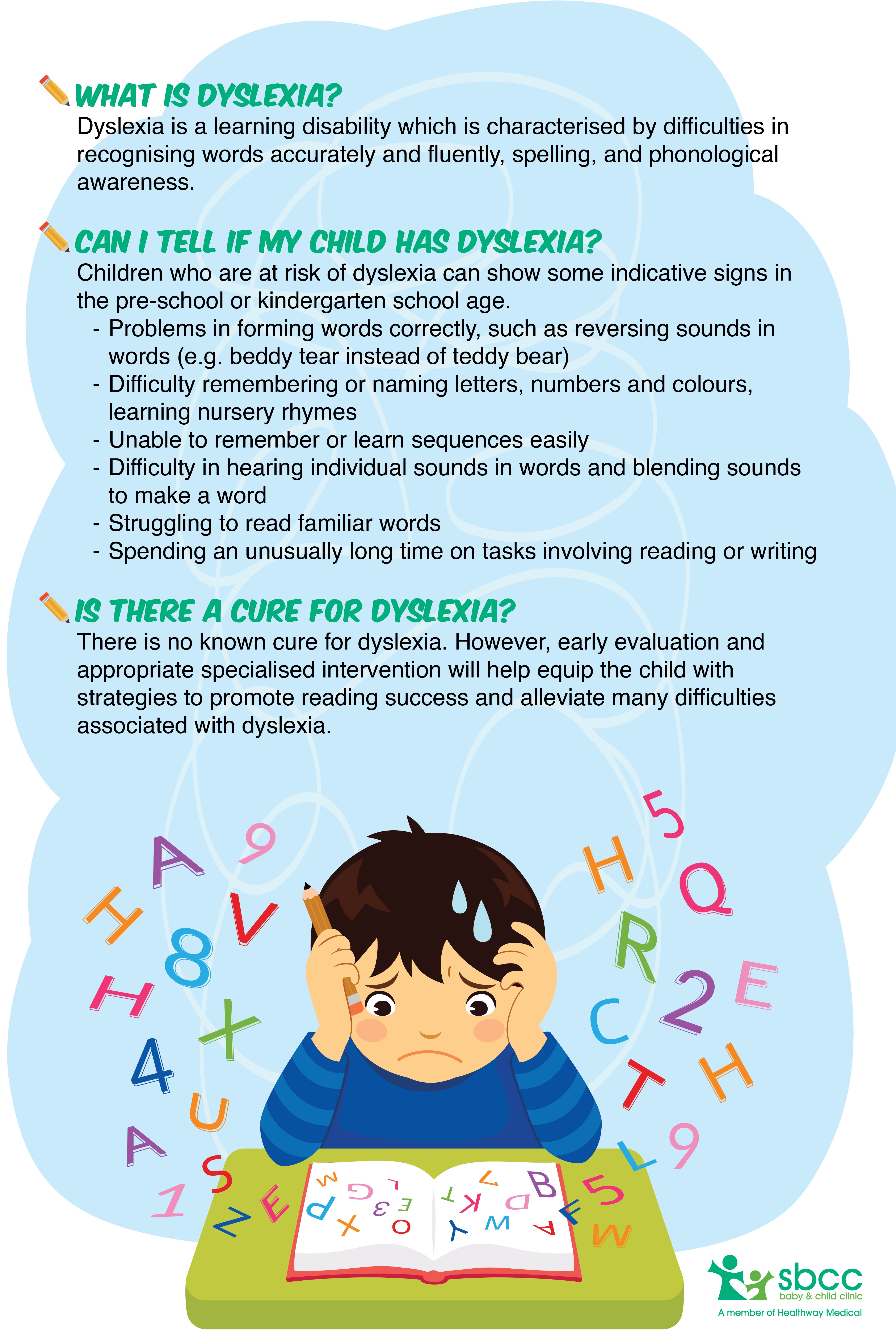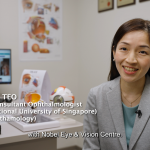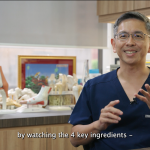
How can I tell if my child is dyslexic?
Some signs in the preschool years that indicate a child may be dyslexic or in the risk of dyslexia include problems in:
- Forming words correctly, such as reversing sounds in words (e.g. beddy tear instead of teddy bear)
- Remembering or naming letters, numbers and colours, learning nursery rhymes
- Learning or remembering sequences.
Many people think that letter reversal (e.g. mixing up the letters ‘b’ and ‘d’, or ‘p’ and ‘q’) is a sign of dyslexia. This is not necessarily the case, as some kids with dyslexia have it, but others don’t. Letter reversal by itself is actually common in children under the age of 7.
Other signs of dyslexia in the kindergarten and school age years include:
- Difficulty in hearing individual sounds in words and blending sounds to make a word
- Struggling to read familiar words
- Spending an unusually long time on tasks involving reading or writing
- Generally reading and spelling below the expected level for age.
How is dyslexia diagnosed?
If you suspect your child may have dyslexia, he should be seen by a developmental paediatrician or trained educational psychologist. They will take a thorough history of your child’s development, educational issues, and medical history, as well as learning and home environment. Teachers’ feedback may also be sought.
Dyslexia may be associated with other related conditions such as attention deficit hyperactivity disorder (ADHD) and dysgraphia (problems with handwriting). Thus it is important that these associated conditions are also picked up and addressed. The formal diagnosis of dyslexia is made using a series of standardised psychological assessments.
Is there a cure for dyslexia?
There is no known cure for dyslexia. However, early evaluation and appropriate specialised intervention will help equip the child with strategies to promote reading success and alleviate many difficulties associated with dyslexia. The Orton-Gillingham Approach is a well-established structured literacy programme in teaching individuals with dyslexia.
How can I help my child with dyslexia?
Many children with dyslexia have issues with self-esteem. It is important to first instill self-confidence and help your child find his or her strengths and passions. Create a home environment that promotes an interest in reading, such as having dedicated reading times when you can read to your child, read alongside with your child, and have your child read by his or herself. In addition to establishing a structured home reading programme, source for books that interests your child.
Ensure that your child receives the appropriate literacy intervention by qualified, trained personnel, and work with your child’s school teachers on how best to help him or her succeed.

Dr Charmaine Teo
Developmental and Behavioural Paediatrics
SBCC Baby & Child Clinic
Our Specialist
Dr Charmaine Teo is a Paediatrician at SBCC Baby & Child Clinic with a special interest in Child Development.
Dr Teo was previously in the Child Development Unit at the NUH and has worked with children with a wide variety of developmental and behavioural problems, including Autism Spectrum Disorder, Attention Deficit Hyperactivity Disorder (ADHD), learning difficulties, developmental delays, as well as developmental issues in children born prematurely or with chronic medical conditions.









